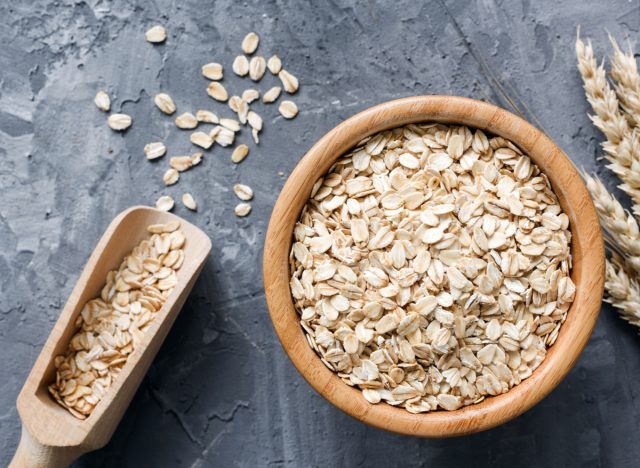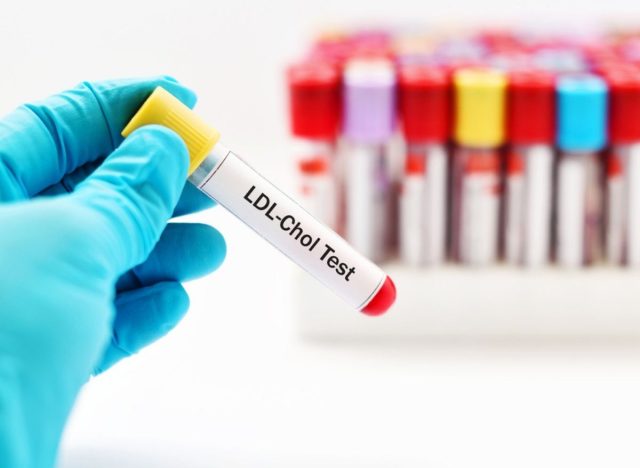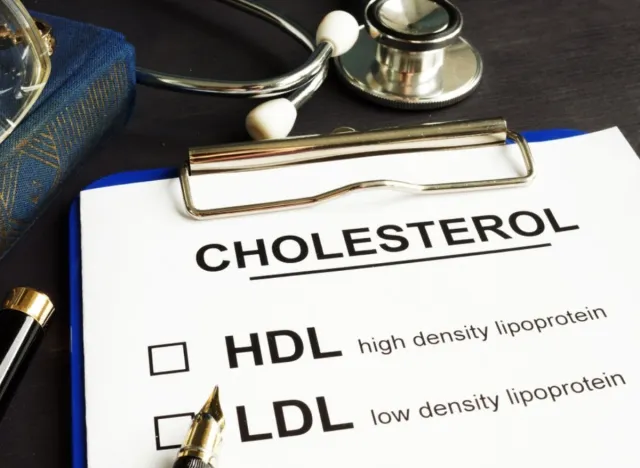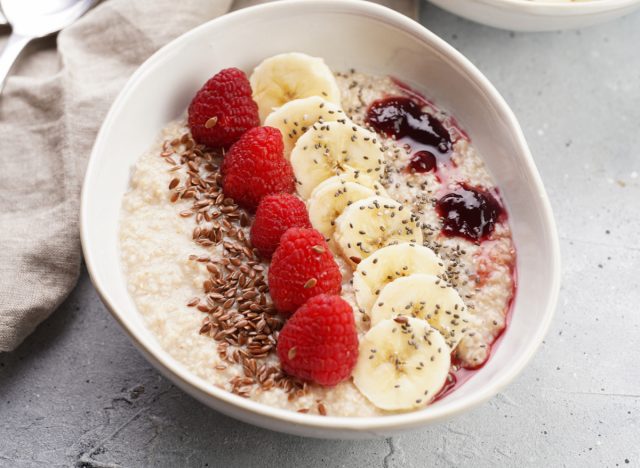Oatmeal is notoriously touted as a natural way to reduce your cholesterol. This is true! However, it’s a little more complex when you consider all the changes that happen to different types of cholesterol in your body.
When you get your cholesterol lab work drawn, you will receive four different numbers: LDL cholesterol, HDL cholesterol, total cholesterol, and triglycerides.
These numbers all tell a different story. LDL is often dubbed “bad” cholesterol because it can be elevated in individuals with heart disease. Conversely, HDL is “good cholesterol” because it helps “clean up” the cholesterol in the body. Total cholesterol is a combined number of all types of cholesterol in the body. Lastly, triglycerides are a type of fat found in the body that is often grouped into the cholesterol lab work results.
We’ve got you covered with a complete breakdown of how oatmeal impacts different cholesterol levels. Then, for more oatmeal tips, check out these 5 Best Oatmeal Habits to Lower Cholesterol.


High cholesterol actually begins in your gut. When we consume a diet rich in whole grains, like oats, a certain amount of cholesterol is bound during digestion.
Thus, this process lowers cholesterol because it gets excreted instead of absorbed. Oats contain a significant source of soluble fiber that helps excrete cholesterol via digestion.


Soluble fiber acts as a “binder” to prevent “bad” cholesterol from being absorbed and circulated.
Choosing high soluble fiber foods like oats, oatmeal, and oat-containing products changes how much cholesterol becomes absorbed by the body.


Total cholesterol numbers include all types of cholesterol in the body—both good and bad!
READ RELATED: Wearing Mask in An Unmasked Crowd Can Still Protects You From COVID-19
Because LDL cholesterol in part makes up the total levels of cholesterol in the blood, total cholesterol also decreases with lower LDL values.


High soluble-fiber foods significantly impact LDL cholesterol, but have virtually no direct impact on HDL cholesterol.
However, the ratio of good to bad cholesterol changes with a heart-healthy diet, and that plays a role in your total cholesterol and your HDL, LDL ratio.
The higher the ratio, the higher your risk of heart disease. Most professionals consider a ratio of less than 5:1 to be considered healthy.


Triglycerides, while not exactly cholesterol, are related as they are the most prevalent source of fat in our body.
Triglycerides are often elevated due to excess sugar in the diet, simple carbohydrates, and saturated fats. Thus, choosing carbohydrate sources that are high in fiber can keep triglyceride levels from rising.
Choose foods like oats, beans, flax, whole-grain bread, and berries for high soluble fiber options in your diet to positively impact your cholesterol panel—including triglycerides!
READ MORE: 5 Best Oatmeal Habits to Lower Cholesterol, Say Dietitians
Caroline Thomason, RDN
Source:











